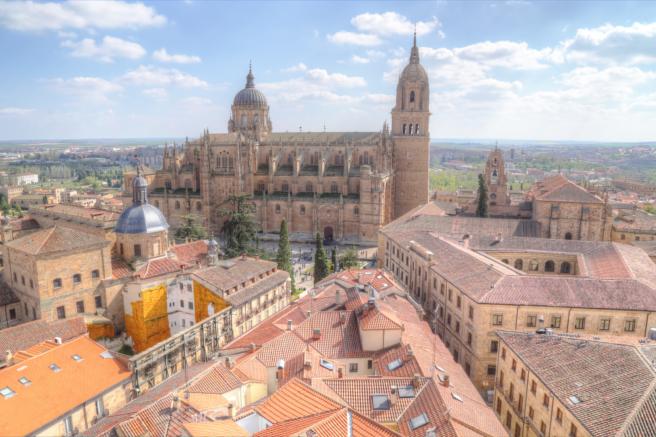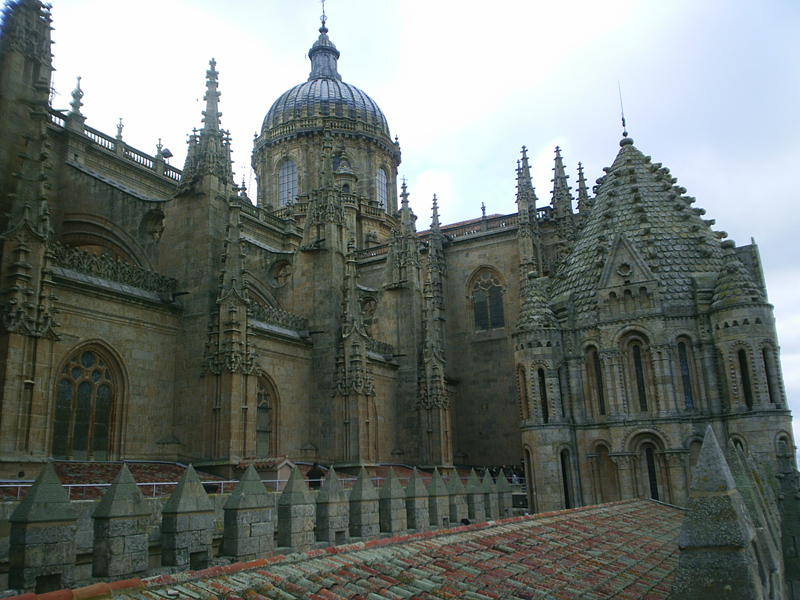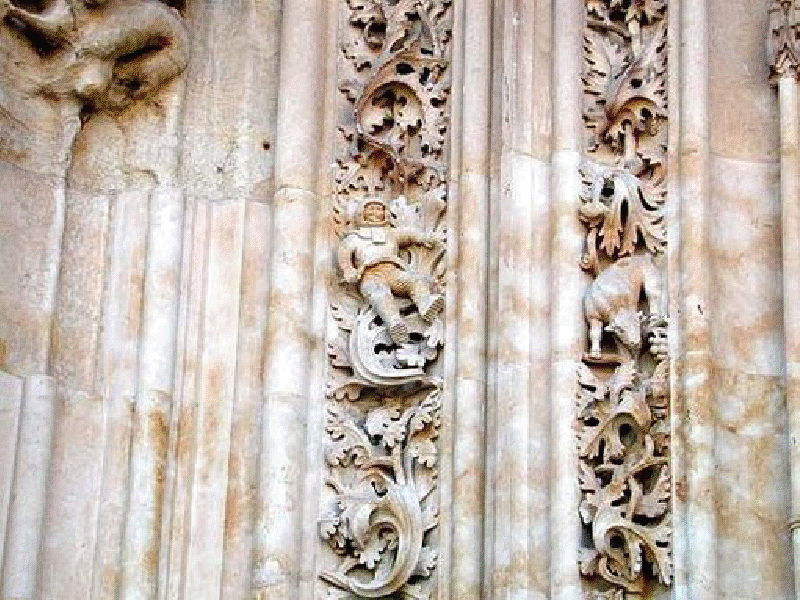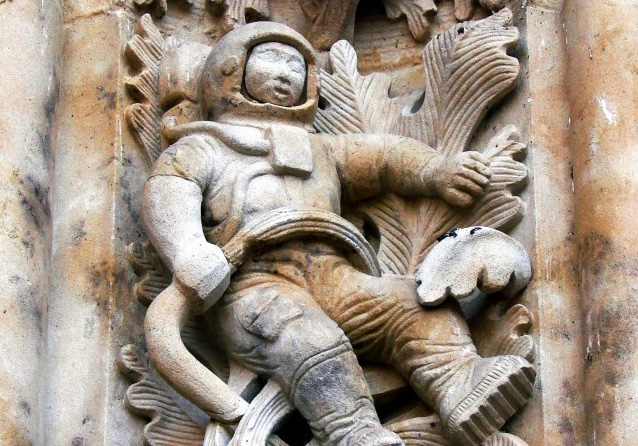The New Cathedral of Salamanca (Catedral Nueva de Salamanca) was built between the 16th and 18th centuries. Construction began on the order of Philip 5 of Castile. The consecration of the temple took place in 1733. Like the old cathedral, it was built at the intersection of architectural trends. The new cathedral combined Gothic and Baroque styles. Over the course of two centuries of construction, Gothic gradually gave way to baroque trends, and along with the change of eras, the style of the building itself changed. Therefore, on the example of the new cathedral, one can see a smooth flow of the Gothic direction into the Baroque.
The new temple became a continuation of the old temple. So wanted city authorities. That is why the Gothic style is still preserved in the features of the cathedral. At that time, the plateresco style, inspired by the Renaissance, was already beginning its victorious march.
Usually a new cathedral is built after the destruction of the old one on its own foundation. However, in this case, you can see something completely different. The old cathedral is perfectly preserved and stands today.

The New Cathedral of Salamanca survived several destructions. The most grandiose was the consequence of the earthquake that occurred in 1755. The consequences of this destruction can be seen even today, because they could not be completely eliminated. On the walls of the cathedral, the cracks left by the Lisbon earthquake are still visible today. 
Tourists in the new cathedral are attracted by the rich history that he had to endure. It was built in the key years for Spain, when, in fact, the country was unified. Another side that is attractive about the new cathedral is its magnificent architecture.


The facade of the cathedral is decorated with stucco work and statues, among which, to no small surprise, you can see a statue of an astronaut, who seems to be floating in the sky. But the image of a man in a spacesuit on the facade of the cathedral of the XVI-XVIII centuries can hardly be imagined. The similarity of the details of the costume is simply amazing. How could the artist know such details? So what's the deal here?
There are many such finds in history, when a seemingly ancient thing turns out to be accidentally or in some cases specially thrown out by someone quite recently. It is even more difficult to draw a clear line between finds from, say, the 14th and 16th centuries, when both things look equally ancient. However, the statue of an astronaut on the facade of the New Cathedral in Salamanca did not appear by chance, and there is nothing mysterious or unusual in its appearance. 
In 1992, the restoration of the cathedral was carried out, and the builders and restorers have a very interesting tradition: at the end of the work, they must add something new to the appearance of the building, as a “signature”. As a result, the façade of the New Cathedral was adorned with several contemporary images: an astronaut, a dragon eating ice cream, a lynx, and a crayfish. 
And although the appearance of the statue of an astronaut is officially documented and is not a secret, many gullible tourists still believe in the legends of ancient space flights.
sources:
